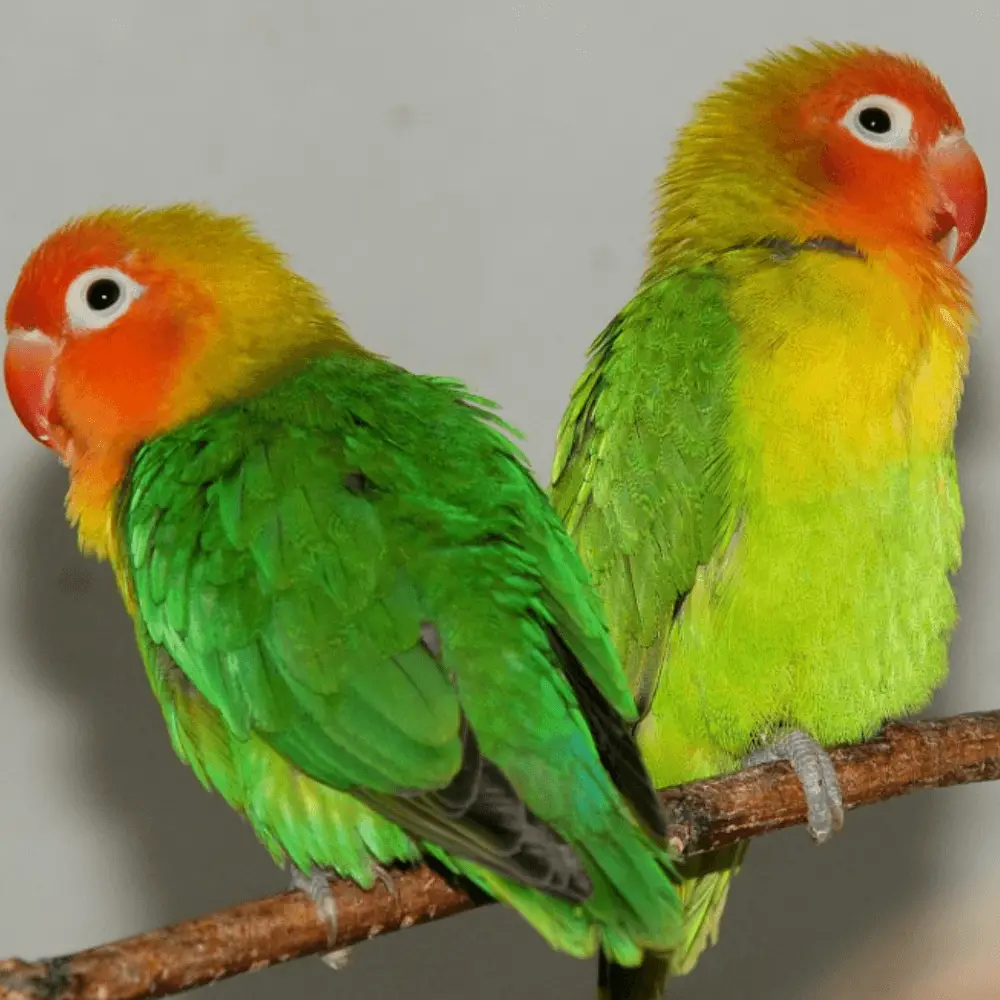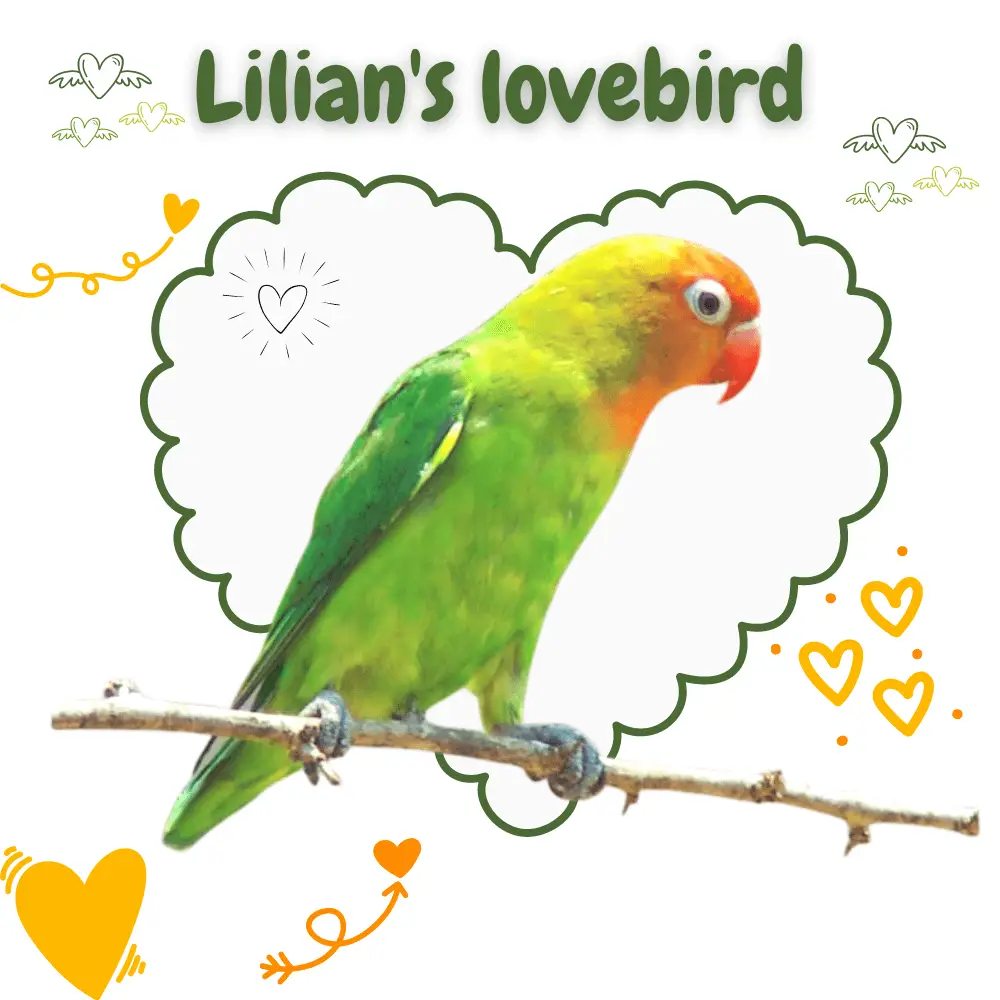Lilian’s lovebird: Who has never wanted to have a lovebird at home? It is difficult to choose just one, but without a doubt, Lilian’s lovebird should be one of those that should be among the first options.
There is not much data on the origin of this species, although it could well be a mutation of the Agapornis fischeri, a bird with which it is normally very confused due to its similarities.
The main one is found in East Africa, especially in southern Tanzania, Malawi, and northwestern Mozambique. It is a bird heavily studied by the Research Project led by the University of KwaZulu-Natal, to better understand its ecology and conservation. Due to agricultural operations, it has almost lost their habitat and now they live in national parks, where they are protected.
Lillian’s lovebird Personality
The Lilian lovebird is very commonly confused with the Fischer lovebird, as they usually measure the same: 14 centimeters and its weight varies from 50 grams more or less, although it can weigh 60 in some variants that have mutated and are slightly bigger.
However, it has some features that make it easy to tell the difference. For example, there is the reddish mask with a slight orange tone that it has on the head, in addition to the fact that in the belly area, it does not have the blue tone that characterizes the fischeri.
The normal thing is that your body color is a bright green shade, while the wings will feature an olive green hue and its chest a greenish but yellowish tone. Its eye ring is well marked and is of a white hue, while its beak is red and the legs have a grayish tone.
Although these are their common colors, due to mutations there are specimens that can have blue plumage, with a chest of a greyish or pale blue tone and a black head, also very common in aviaries.
Knowing the age of a lovebird is very simple since young specimens have duller colors and darker beaks. However, differentiating the female from the male is not so simple, since they do not show sexual dimorphism. As with other species, the only way to tell them apart is with the pelvic bones, which separate them for egg-laying.
As for its character, it is a much gentler bird than the rest of its relatives, which makes it the ideal pet when it has to live with humans. They are generally not very social with other birds, except with their partner. In the case of several birds of this species, it is normal for pairs to live isolated in a hole in the cage.

Description
Men and women are the same color. The forehead and throat are red-orange, the forehead is intense red, the neck and wings are dark green, the tips of the wing feathers are black-brown, the underside is lighter green.
Green tail, outer tail feathers red-orange with the black cross band, and green tip. Red beak, a strip of unwrinkled white waxy skin at the base of the upper beak, unwrinkled white eye-ring, red-brown eye iris, gray-brown legs.
Young birds: of all colors, dull and dark cheeks. Size: 12-13 cm they are smaller and more delicate than other agaporidae, the weight is around 40g, and the females are slightly heavier.
Distribution
Southern Tanzania, northern Zimbabwe, eastern Zambia, and northwestern Mozambique. The distribution center is Malawi.
How to care for a lovebird
Although it is an easy bird to keep in captivity, the truth is that it needs a fairly large cage, since it really likes to move inside from one hanger to another, so they require a lot of space.
Let’s say about 60 centimeters more or less. In addition, he must have horizontal bars on which he can lean to see the outside.
It is a bird acclimatized to average temperatures, around 15 ° C, but in the event that it is in a very hot area, it should not be in a space where the sun gives it all day and that does not receive continuous gusts of air. It is therefore necessary to find a place to take shelter in the case of living in an area with low temperatures.

Lilian’s lovebird food
It is easy to feed, as it eats seeds of any type, although its favorite is panizo en rama. It is best to give him a combination of bird seed, millet, oats, hemp, pipe, and, of course, panizo den rama, to keep you satisfied. Sometimes a piece of fruit, a few berries, or white dirt will do you good with vitamins and nutrients. You can add a vitamin complex to the water to make it healthy.
Lilian’s lovebird breeding
Although he is a good companion, he is very difficult to breed. Experts have not yet been able to explain the significant decline in the population of this bird, which makes them difficult to find.
In addition, it is quite difficult to get a Lilian lovebird with a white eye ring, and when they lay eggs, the rate of sterile eggs and mortality is high. It is therefore not recommended to have this bird at home if you are an inexperienced breeder.
Breeding is a little more difficult than that of other agapornidos. They like to breed, but often only half of the brood is fertilized and the mortality rate of young and adults is higher. Breeding is more frequent when several pairs are kept together.
Tall-shaped nest boxes are more likely to be accepted than horizontal nest boxes. The female enters the nest material (fine twigs, bark, straw, and other similar dry materials). Clutches consist of about 5 eggs; the incubation period is 22 days, so the female breeds from the first day.
Nesting time is about 5 weeks. Do not allow more than 3 intakes per year, due to the high stress of female mutations! So far, isolated blue and yellow mutations are known. In the yellow form, the red coloration of the head is retained.
Lilian’s lovebird cage
More sensitive and more demanding in terms of care than other lovebird species, they are therefore rarely offered commercially. Keep in pairs (the lovebirds!) or in a herd. Considered the most tolerable Agapornid species, it also gets along quite well with other birds, such as finches, parakeets, and cockatiels.
They also like to fly in the enclosure, so large cages, or better still an aviary (min. 100Wx50Dx120H cm). They like to sleep in roosts or on raised wooden boards. Gnaw a lot, so offer bars without plastic coating and regular branches. Possibility to bathe, as they like to bathe.
The climbing tree or the hanging seat are ideal places to stay. They catch a cold easily and should not be exposed to temperatures below 10°C; they must spend the winter warm.
Lifestyle in nature
Always near water, like the wooded lowlands of the Zambezi or the shores of Lake Nyasa. Breeds from December to March mainly in knotholes, in abandoned weaver’s nests and on huts and houses.
Carry nesting materials such as thin twigs, strips of bark, and palm fronds. Feeds on grass seeds, flowers, buds, fruits, and tree seeds; also likes to invade mature millet fields.
Related article:

